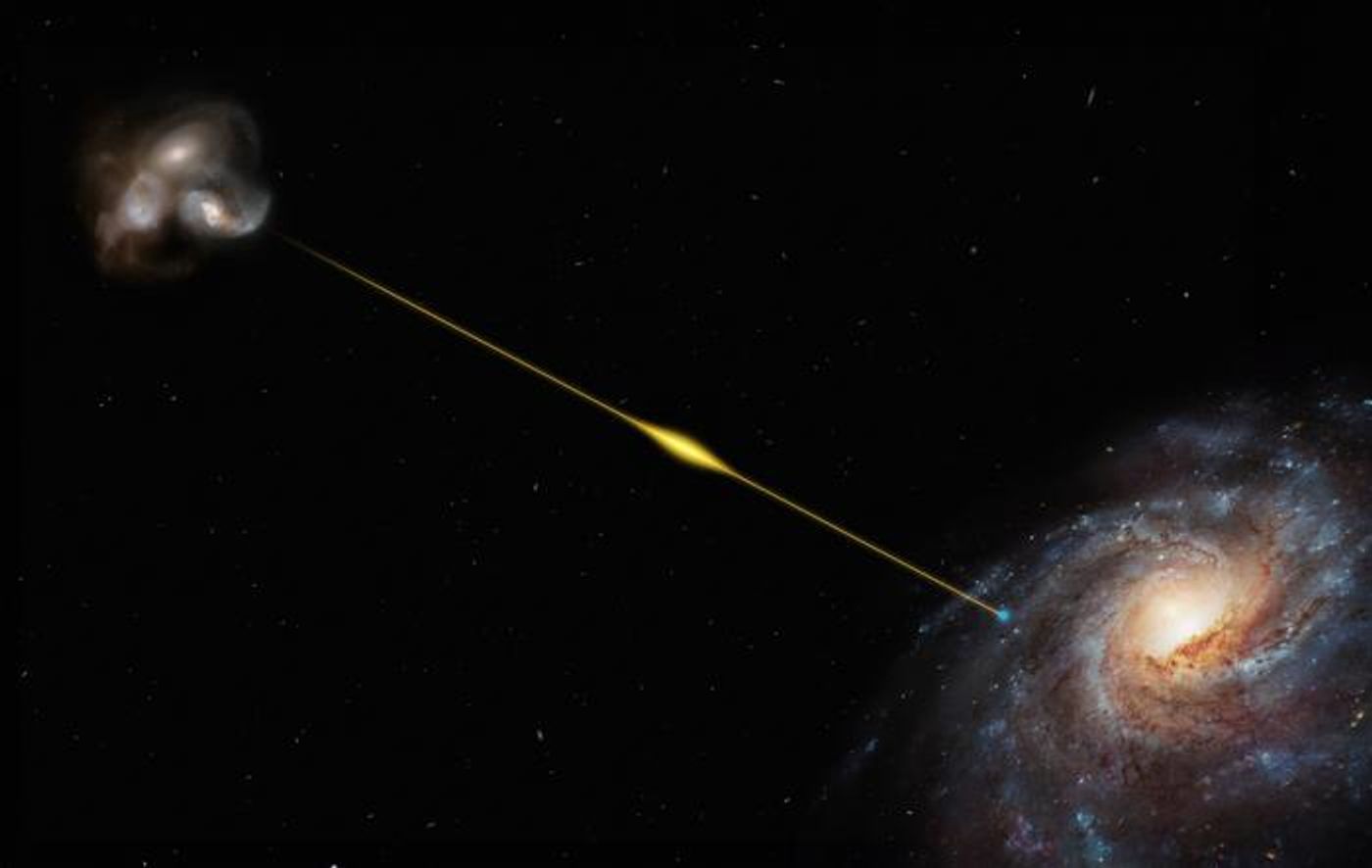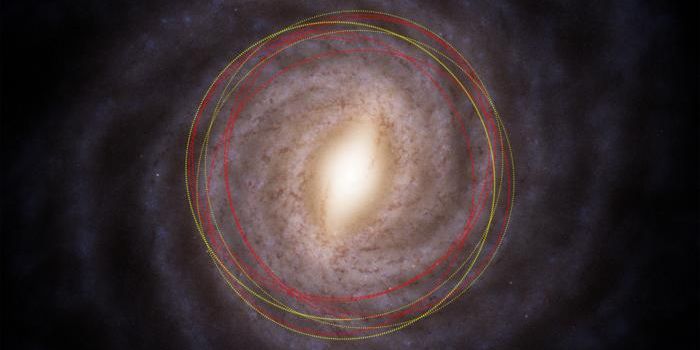Record-Breaking Fast Radio Burst Provides Insights into Missing Matter Between Galaxies
A recent study published in Science used the Australian Square Kilometre Array Pathfinder (ASKAP) part of the Commonwealth Scientific and Industrial Research Organisation (CSIRO) to observe a record-breaking discovery pertaining to what are known as fast radio bursts (FRBs), as an international team of researchers have identified the oldest and most distant FRB, approximately eight billion years old. For context, the universe is approximately 13.7 billion years old.
Dubbed FRB 20220610A, the team confirmed the source was emanating from two to three merging galaxies, along with confirming that FRBs are a useful method to estimate the “missing” matter that exists in the space between galaxies, as well. Additionally, the researchers estimate that this FRB surpasses their previous FRB record by 50 percent.
Artist’s rendition (not to scale) of the path of FRB 20220610A from its source at the merging galaxies to Earth. (Credit: ESO/M. Kornmesser)
“Using ASKAP’s array of dishes, we were able to determine precisely where the burst came from,” said Dr. Stuart Ryder, who is an adjunct fellow at Macquarie University and lead author of the study. “Then we used the European Southern Observatory (ESO) Very Large Telescope (VLT) in Chile to search for the source galaxy, finding it to be older and further away than any other FRB source found to date, and likely within a small group of merging galaxies.”
Artist rendition of the FRB identified for this study and the telescopes used to find it. (Credit: Carl Knox (OzGrav/Swinburne University))
Finding the exact locations of FRBs is extremely difficult, as only 50 have had their sources confirmed, with almost 50 percent of those being identified using ASKAP, which is the world’s best radio telescope in identifying FRBs. However, that might change in the future as a few SKA telescopes are presently being built in South Africa and Western Australia, which astronomers estimate will enable them to identify FRBs that are older and farther away than FRB 20220610A. Additionally, the source galaxies of these FRBs could be identified by using the European Southern Observatory’s Extremely Large Telescope, which is currently being built in Chile.
As noted, this discovery helps confirm that FRBs can help estimate the “missing” matter between galaxies, which could help astronomers estimate the total mass of the universe.
“If we count up the amount of normal matter in the Universe – the atoms that we are all made of – we find that more than half of what should be there today is missing,” said Dr. Ryan Shannon, who is an associate professor at the Swinburne University of Technology. “We think that the missing matter is hiding in the space between galaxies, but it may just be so hot and diffuse that it's impossible to see using normal techniques. Fast radio bursts sense this ionized material. Even in space that is nearly perfectly empty they can ‘see’ all the electrons, and that allows us to measure how much stuff is between the galaxies.”
What new discoveries will astronomers make about FRBs in the coming years and decades, and how will FRBs help us estimate the mass of the universe? Only time will tell, and this is why we science!
As always, keep doing science & keep looking up!
Sources: Science, EurekAlert!, Wikipedia, Macquarie University










